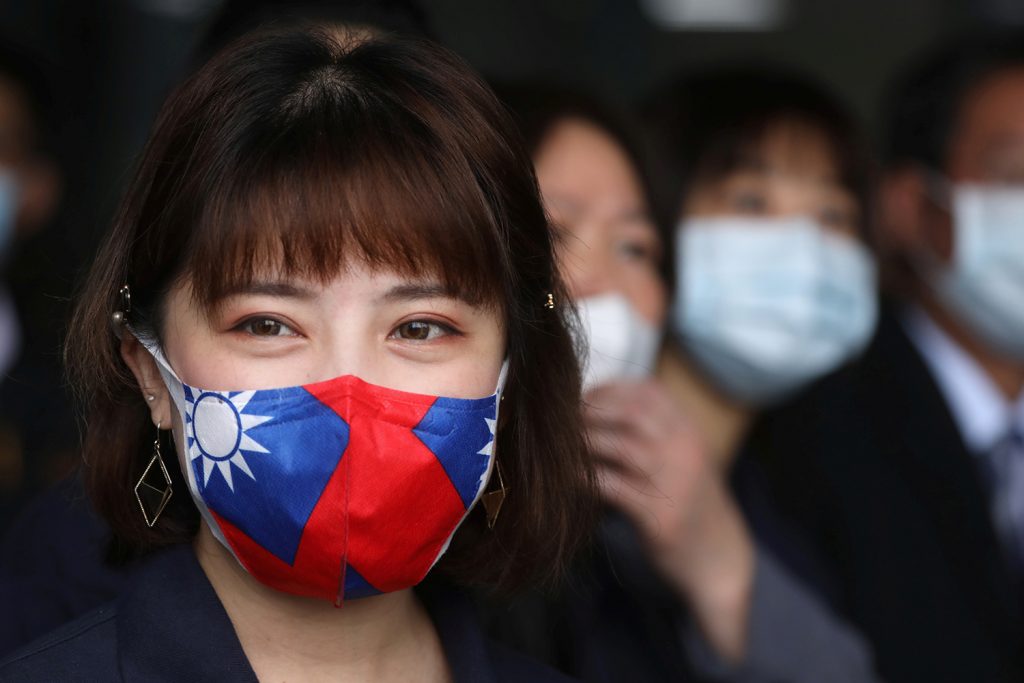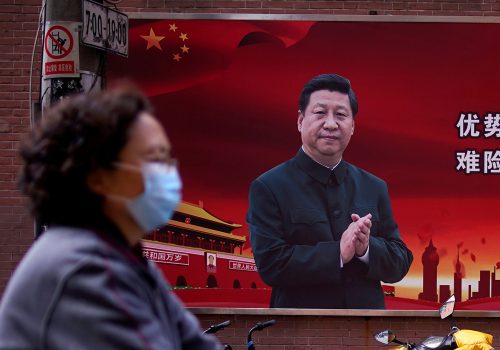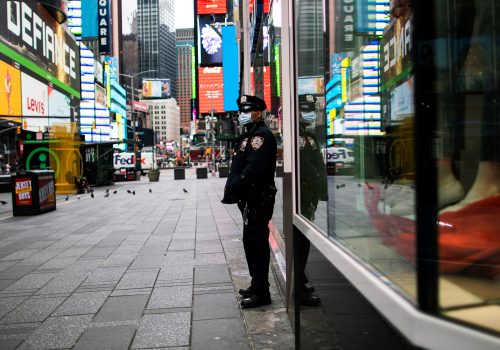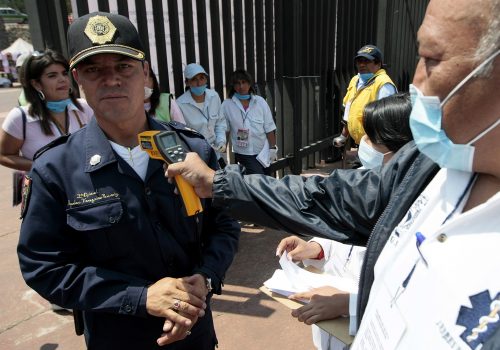As governments and citizens in the United States and around the world struggle to cope with the novel coronavirus pandemic (COVID-19), the experience of Taiwan can help illustrate some potential paths forward to combat the spread of the disease.
Taiwan was well positioned to react quickly and effectively to the COVID-19 outbreak. Taiwan’s experience with SARS in 2003 helped drive the government to react immediately to the emerging crisis, classifying the unknown disease as “Severe Special Infectious Pneumonia” as early as January 15, before later adopting the name COVID-19. Additionally, Taiwan has a 99.9% national health insurance coverage rate and has been evaluated as the world’s best system by the Global Health Care Index. Early intervention, a flexible command structure, a comprehensive epidemic prevention strategy, integrated medical big data, and proactive information disclosure allowed Taiwan—which at its closest point is only eighty-one miles (130 kilometers) away from China and has a very high population density—to record only a few confirmed cases in recent months. There are a number of lessons to be learned from the Taiwanese government’s effective response to COVID-19 that should be shared with other parts of the world fighting the ongoing pandemic.
Lesson 1: Effective government-led public-private collaboration
The battle against COVID-19 is just beginning. Around the world, countries have only limited resources for epidemic prevention, insufficient medical supplies, and are facing panic among the public. As countries grapple with large-scale infections, the United Kingdom, Italy, and others haven taken measures to provide medical care for only moderate to severe patients in order to save medical resources. Given the relative lack of scientific knowledge about the virus, for most people in general health, active education and public messaging should be a top priority to stop the spread of the virus.
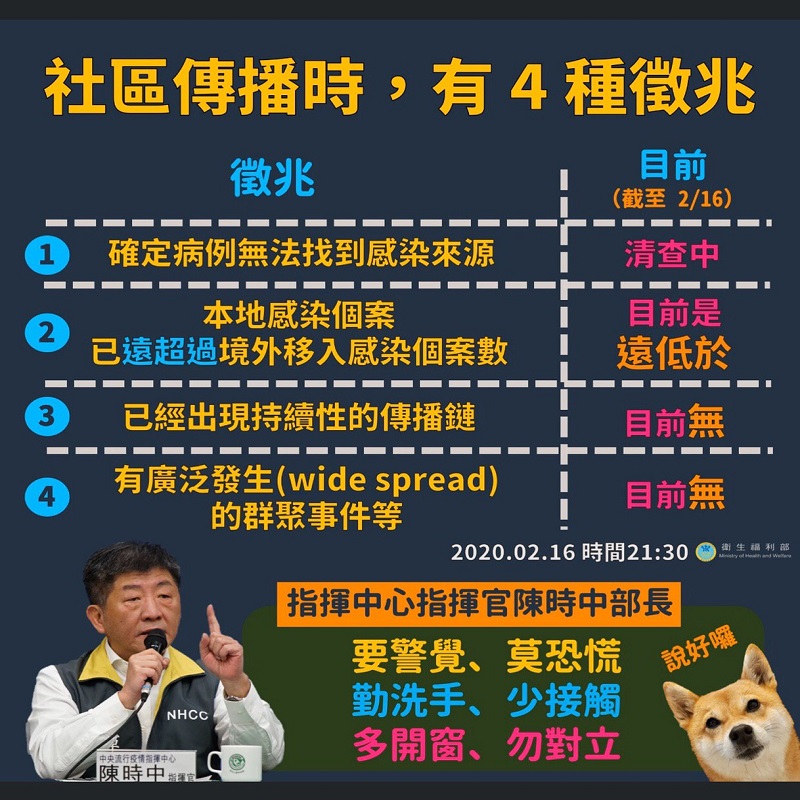
In Taiwan, in accordance with the “Communicable Disease Control Act” (傳染病防治法), an open and transparent epidemic information platform was established through the “Central Epidemic Situation Command Center” (中央流行疫情指揮中心). Starting on January 23, a daily press conference was held to explain the epidemic situation. Simultaneously updates came from relevant government departments, medical institutions, and private social media accounts. In addition, Taiwan’s government often focuses on “epidemic prevention for dummies” (防疫懶人包)—simple graphic descriptions—to share knowledge of epidemic prevention across large networks, in order to gradually dissemination of correct guidance on prevention and control among the public.
Photo: “Epidemic prevention for dummies“
In order to effectively manage medical supplies, government departments have also taken the lead in establishing a unified information platform. For example, Audrey Tang (唐鳳), the minister without portfolio of the Executive Yuan (行政院政務委員), helped coordinate civil society organizations to build a mask supply and demand platform. By leveraging big data in the health insurance database, a “name-based mask rationing system” (口罩實名制) policy was implemented on February 6, with multiple civil apps and websites available for the public to access.
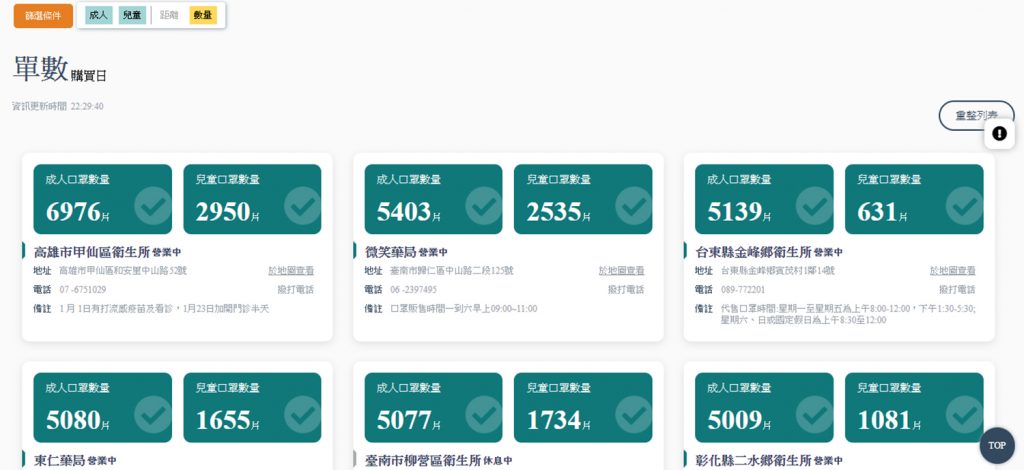
Crises often impact socioeconomically underprivileged groups more seriously and governments need to coordinate with the private sector and civil society to build a dense “social safety net,” to ensure that every individual has access to daily needs. Taiwan’s civil society is mature, with a deep network of nonprofit organizations and volunteer groups. As the outbreak of COVID-19 worsened, local governments cooperated with private companies on “quarantine relief” (安心檢疫所), providing isolation hotel rooms for those who cannot do so at home. Some local governments have also set up “epidemic prevention funds” to accept donations from private enterprises or groups to subsidize the purchase of protection equipment and other supplies for vulnerable groups and those directly affected by the epidemic.
The central government also cooperates with LINE, a communication software used by more than 21 million people in Taiwan (similar to WhatsApp), to create free stickers. People in Taiwan can visit the official account (@mohw) of the Ministry of Health and Welfare to get the free stickers, and also can learn about official information in real time. This is another effective communication for the circulation of epidemic prevention.
The United States has also achieved considerable results in this regard. For example, the New York Public Library and the Metropolitan Opera have provided free downloads of e-books and performances; logistics providers such as Amazon and Walmart have opened job vacancies to those people who have been laid off, Facebook and other social media platforms have established epidemic information integration centers, and many companies and non-governmental organizations have provided a variety of assistance. During this severe epidemic, unemployment, and helplessness, people can still feel warm support from their societies.
Lesson 2: Integration of mass media
Taiwan has a solid information and communications infrastructure. During the epidemic, the Taiwanese government actively cooperated with private media companies to regularly broadcast basic preventive knowledge such as “washing hands and wearing masks” on television and radio stations.
The Taiwan Centers for Disease Control (CDC) began sending a newsletter in January through the “Disaster Prevention Cell Broadcasting System” (災防告警細胞廣播傳染病警示訊息發送系統) to provide the public with accurate and timely epidemic information. The government also worked with the civil sector to launch various “mask maps” and “epidemic prevention maps” that let the public know immediately the locations and quantity of epidemic prevention supplies in more than 6,000 pharmacies in Taiwan. These are all important information transmission channels to raise people’s awareness of epidemic prevention and reduce panic.
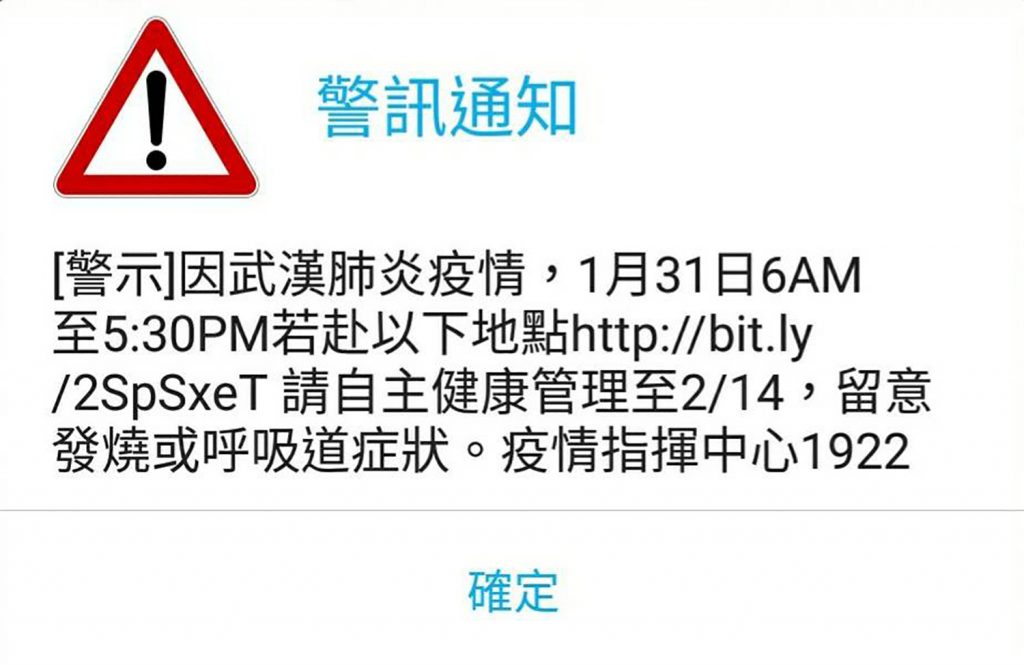
According to We Are Social’s Digital 2020 report, there are 277.6 million people (84 percent of the total population) using mobile phones and the internet in the United States. In order to improve the general public’s epidemic prevention knowledge and awareness, US government departments should utilize various social media platforms (such as Facebook, Twitter, and Instagram), electronic media channels (such as e-commerce sites like Amazon, Ebay, etc.), print media, and broadcast media to regularly disseminate epidemic prevention information. If the government can integrate these channels with their existing emergency warning programs and actively transmit epidemic prevention information in a timely manner, it will improve the public’s awareness and reduce panic.
Lesson 3: Alternative social etiquette and lifestyle changes
Societies in Europe and North America did not experience the severe SARS epidemic in 2003, and therefore are still learning how to respond to a severe public health crisis. To begin, the public must first overcome their misconception of COVID-19 as a more serious version of the seasonal flu. Medical experts in Taiwan believe that the infection rate, severe illness, and mortality of COVID-19 are very high. The most important measure for epidemic prevention is to establish correct cognition and adjust social etiquette and lifestyle in a timely manner. This is the best “mitigation measure” to reduce the chance of infection.
In Taiwanese society, wearing a mask is part of a normal lifestyle. It is even more common for sick people to wear a mask. However, during this period of crisis, the demand for masks, disinfectants, and other anti-epidemic supplies has increased greatly. In order to allow medical staff and patients to have priority access, the government has implemented rationing policies. Following the government’s example, many Taiwanese have also spontaneously cooperated with the “I am OK, you take the mask first” campaign, gradually changing their daily mask-wearing habits.
In addition to promoting the new concepts of “social distancing” and “self-quarantine,” Western societies’ habit of shaking hands, hugging, and kissing cheeks during interpersonal communication has also gradually changed and has been replaced by other alternative methods, such as touching the elbow or nodding. However, it is still necessary for the government to make more public announcements going beyond orders to avoid unessential gatherings or travel.
Subscribe to The future is here: A guide to the post-COVID world
Sign up for a weekly roundup of top expert insights and international news about how coronavirus is reshaping international affairs.
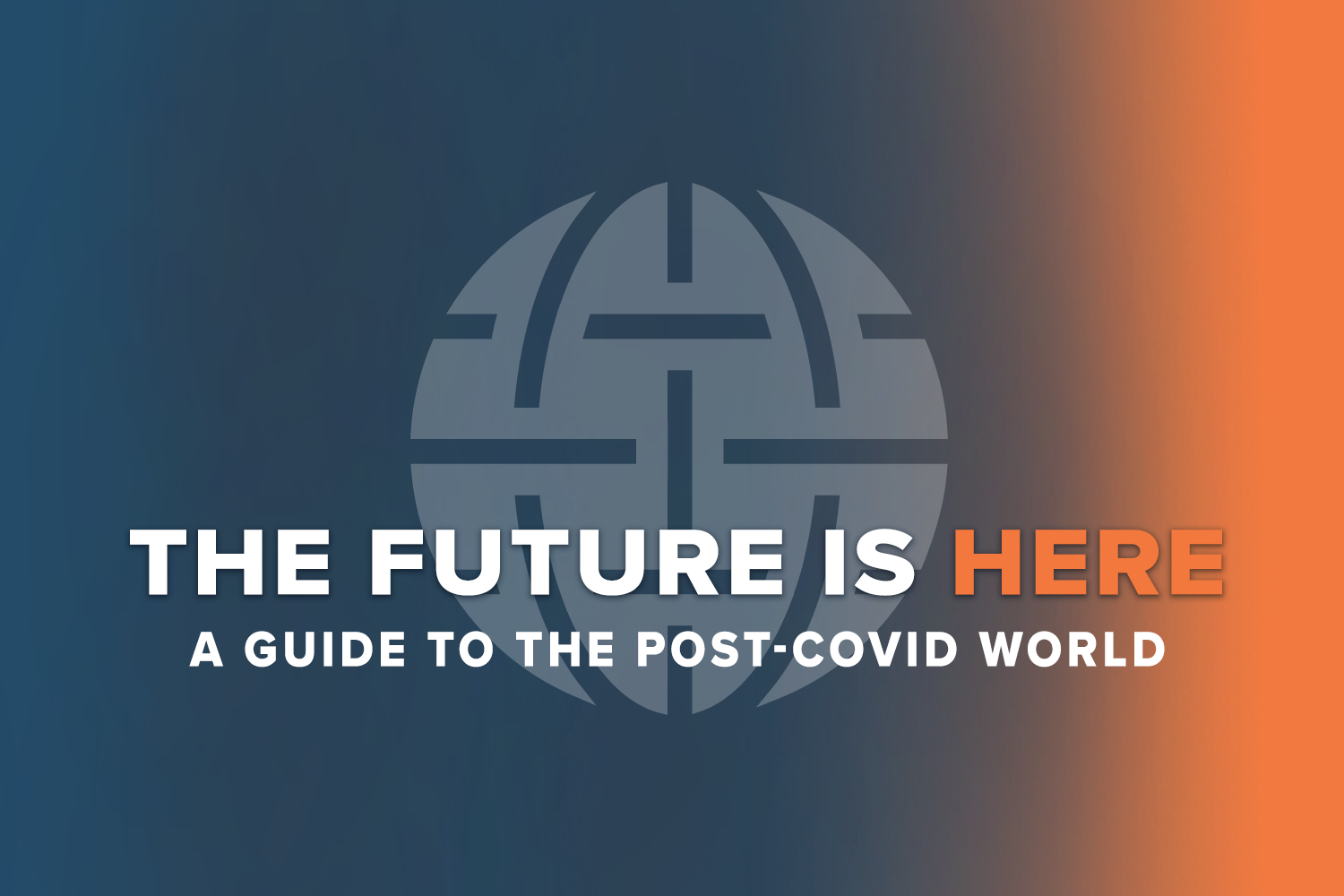
Lesson 4: Identification and clarification of misinformation and disinformation
In the era of social media, the government must gain public trust with transparent information and continue to provide clear and decisive guidance. However, the fear and anxiety surrounding COVID-19 may also help the circulation of misinformation and disinformation, creating unnecessary panic in society. This issue has become a critical challenges for all countries. Therefore, the government’s ability to respond quickly to misinformation and disinformation is as important as proactively publishing information themselves.
In order to prevent the transmission of misinformation and disinformation, Taiwan has established the “Taiwan FactCheck Center,” and each department currently has a “Meme Engineering team” (迷因工程團隊). When it discovers misinformation or disinformation online, the team will verify it within sixty minutes and clarify it to the public immediately. These measures can prevent unnecessary panic and anxiety during the epidemic prevention period.
Understanding and mutual assistance are stronger than fear
The prevention and control of COVID-19 requires joint efforts by governments and citizens. This crisis demonstrates that pandemics do not care about race or national borders. To borrow former US President Barack Obama’s words in 2015 “Let’s not forget, freedom is more powerful than fear.” I would slightly modify it to add “Let’s not forget, understanding and mutual assistance are more powerful than fear.” Through international epidemic information sharing and medical cooperation, the impact of the COVID-19 pandemic can be minimized. If a country can surpass the barriers between political parties and ethnic groups and release epidemic prevention information with active, timely, and integrated measures, it will have made a crucial step towards good governance—the most effective mitigation measures for epidemic prevention.
I hope that the United States and people from all over the world can work together to get through this crisis.
Chang-Ching Tu is the Taiwan senior fellow in the Scowcroft Center for Strategy and Security’s Asia Security Initiative and assistant professor at the ROC (Taiwan) National Defense University.
Further reading:
Image: A staff wears a face mask with a Taiwanese flag design, as protection due to the coronavirus disease (COVID-19) outbreak, at a factory for non woven filter fabric used to make surgical face masks, in Taoyuan, Taiwan, March 30, 2020. REUTERS/Ann Wang
